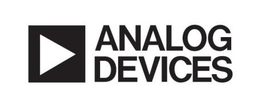MOST150-based advanced driver assist system
The MOST Cooperation announce a new advanced driver assist system network based on the MOST150 star topology. The MOST150 based ADAS network transmits HD video streams from up to eight cameras, using up to 1.2 Gbit/s total bandwidth. Connected to a central node in a star topology over coaxial cable, the 360-degree automotive top view system uses small-footprint high dynamic range cameras. Based on a two-chip solution, these cameras do not require a microcontroller with the remote control feature.
Inherently synchronised, the multi-channel network approach of MOST is perfectly adapted for ADAS: it assures hard real-time determinism and ultra-low latency at 10 milliseconds; flexible topology; high bandwidth; safety aspects; as well as robustness and maturity.
True full bandwidth is allocated to each branch as a result of the multiport network interface controller. Without influencing the flow of streaming data in the rest of the system, the different branches can then be built with any topology and hot-plugged or disconnected.
A significant amount of data is streamed for a prolonged period of time when sending a video stream from the camera to the renderer. This continuously flowing stream of data cannot be interrupted or delayed, particularly with ADAS. Providing low latency and determinism throughout the system, MOST delivers video streams that comply with safety protocols.
The multiplex architecture inherently offers guaranteed bandwidth and latency for the transport of data streams. It does not require additional communication processors and addressing information. It also does not need the bandwidth-wasting process of breaking up the data into packets that then need to be examined every time they go through a device along the route.
by allowing for bidirectional communication and power supply across the same cable, MOSTCO uses a coaxial cable to provide scalable electrical physical layer for the ADAS automotive domain. With inherent shielding, coaxial cabling is the industry standard cable for transport of high frequency signals. Providing low-cost and standard cables and connectors, its construction enables an automated connector assembly, allowing lower assembly costs than shielded twisted pairs of copper wires. It also offers low reflections at up to 100 meters distance, dependant on bandwidth and cable/connector quality. Already working up to several Gbit/s, the coaxial standard delivers an EMC-proof and low-cost electrical physical layer.





